The German “Sturmgewehr” (StG) rifles of World War II represented a significant breakthrough in small arms design. Leveraging a new intermediate cartridge (7.92×33 Kurz); cost-effective production with stamped, pressed and roughly finished parts; and a new focus on short-range firepower for the average infantryman; the StG 43/44 rifles created an instant impact on the battlefield.
Even so, and while the 3rd Reich was in its final days, Germany sought to improve their Sturmgewehr to maintain its combat performance while simplifying and streamlining production. The result was the little-known, but highly influential StG 45.
A Mauser Development
As good as it was, the StG 44 was still considered a major step down in fit and finish compared to traditional German manufacturing standards. But, as the Reich’s economy crumbled in 1944, even the initial Sturmgewehr designs had become too costly and time-consuming to manufacture. The StG 45(M) was planned as its replacement, projected to cost only 45 Reichsmarks to the StG 44’s 70.
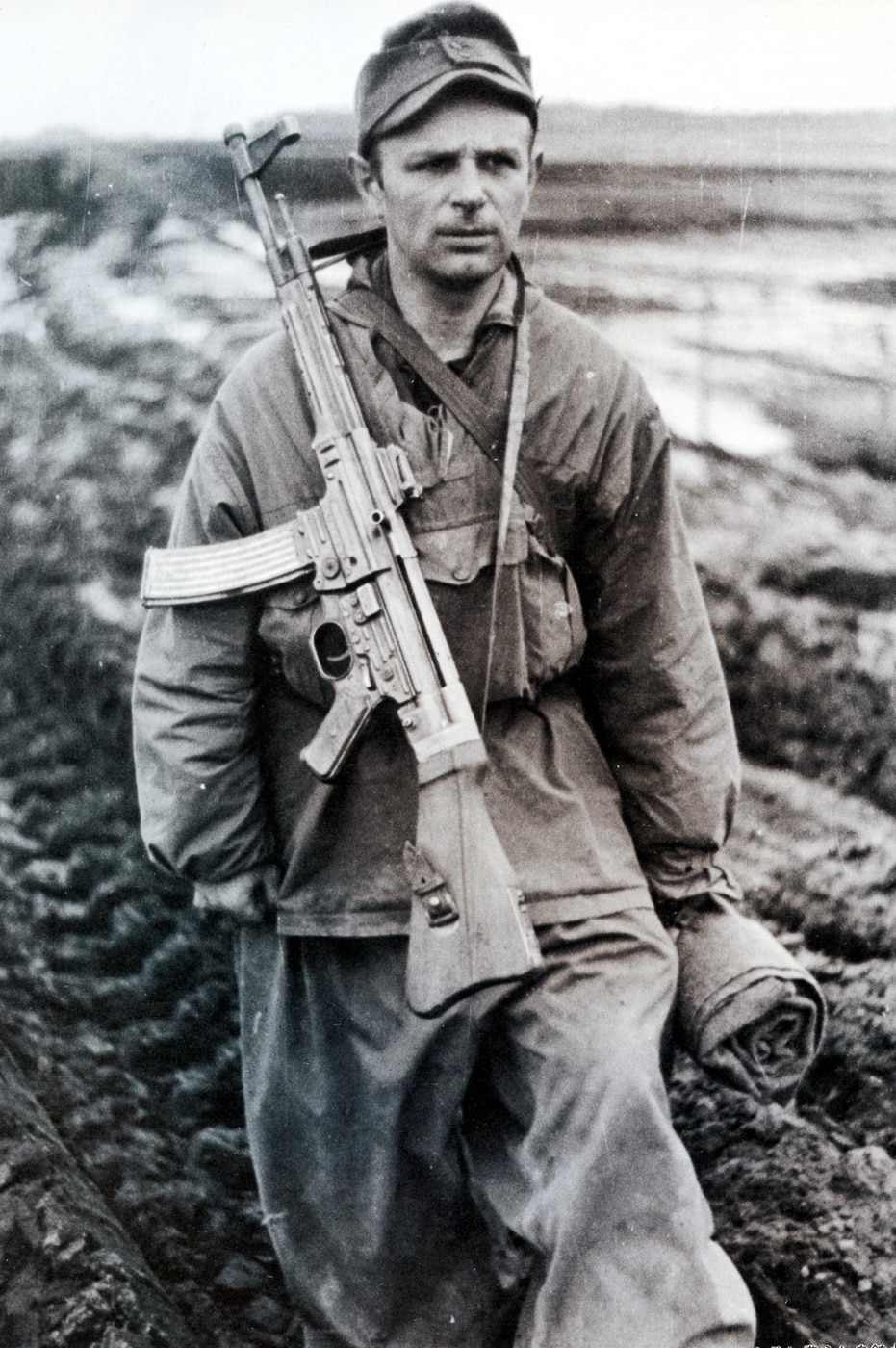
The StG 45(M) continued the use of plentiful stamped and pressed steel components, while fit and finish remained completely utilitarian. Similar to the FG 42 paratrooper’s rifle and the Sturmgewehr 44, the StG 45(M) was an early “inline” rifle; its shoulder stock and center of gravity were directly inline with the bore.
The sight line directly over the barrel helped make the StG 45(M) more accurate, easier to control on full-auto, and faster to learn — all important factors for German forces starved for capable fighting men. The StG 45(M) was to be a complete rifle for the infantry.

The original prototype, the MKb Gerät 06 (“Machine Carbine 06”), used a unique roller-locked mechanism adapted from the MG 42. Initial tests showed a troubling tendency for “bolt-bounce,” and Mauser designers addressed the problem with a roller-delayed blowback system. This became the “Gerät 06H” (half-locked), and eventually received the designation of Sturmgewehr 45(M). The unique roller-delayed blowback action was patented by Mauser’s Wilhelm Stähle and Ludwig Vorgrimler.
The StG 45(M) was to use the same 30-round magazine as StG 43/44, but it is almost always seen fitted with a small, 10-round magazine. Apparently, the Mauser engineers found the 10-round magazine more convenient when test-firing Sturmgewehr 45 prototypes at the Mauser ranges. Some reports claim that the 10-round magazine was intended for the Volkssturm militia — which would speak to Germany’s prevailing ammunition shortages and the desire to use the Sturmgewehr rifles in the semi-automatic mode as much as possible.

In the spring of 1945, Mauser was given an order to produce 30 examples of the StG 45(M) for troop trials and, although parts for 30 rifles existed, very few were finished before the war’s end. Several parts kits were assembled postwar for Allied forces.
After World War II
Despite never firing a shot in anger, the StG 45 survived WWII, and Mauser’s roller-locked, retarded-blowback principle was applied to several post-war rifle designs. Several of the Mauser design team continued working, this time at Centre d’Etudes et d’Armement de Mulhouse (CEAM) in France.
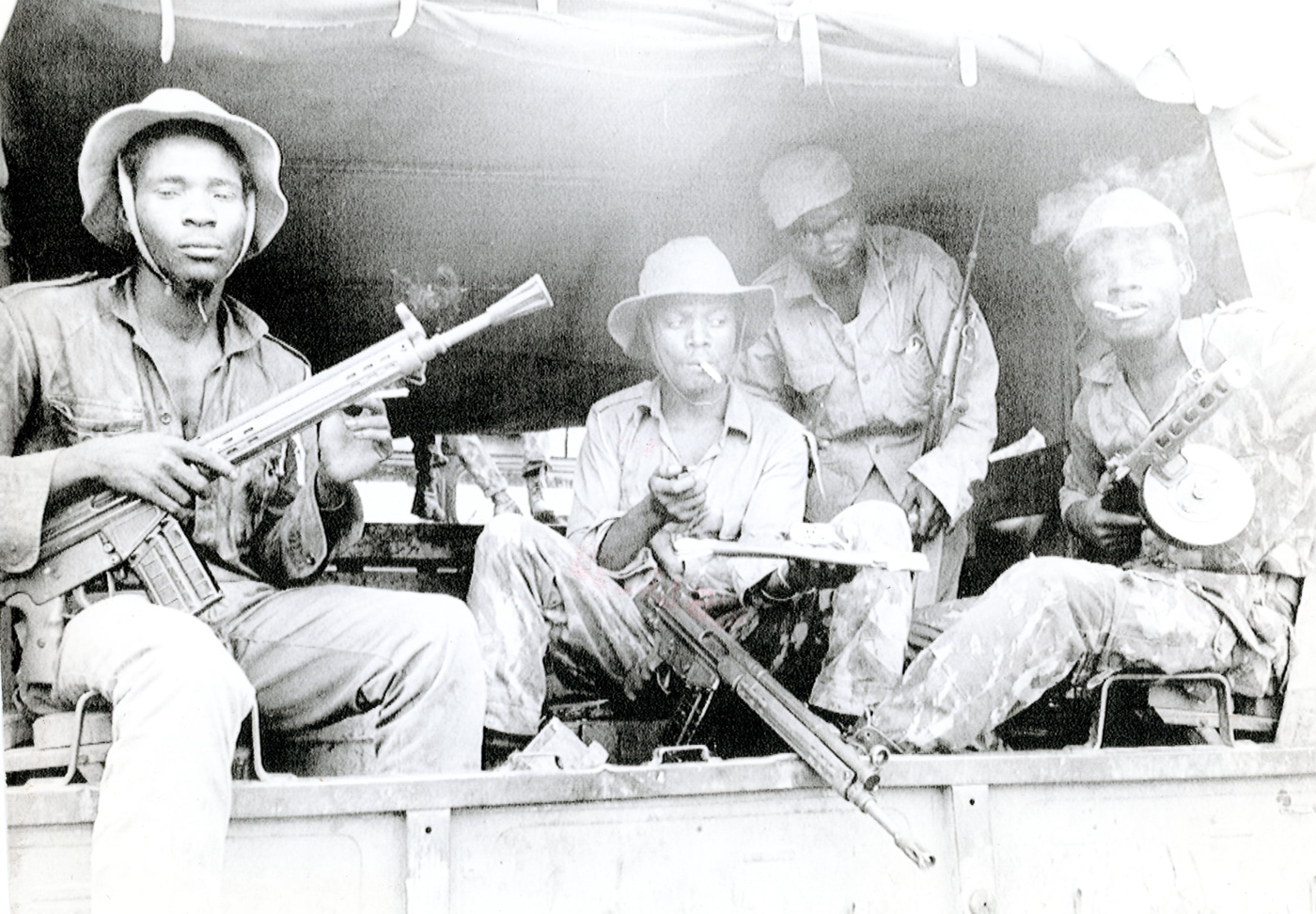
By 1949, German engineers Ludwig Vorgrimler and Theodor Löffler had modified the StG 45 into the CEAM Modèle 1950 — an assault rifle with a combined bipod and handguard as well as a folding buttstock. After experimenting with several cartridges, the designers settled on U.S. .30 Carbine. With France at war in Indochina and Algeria, the French opted to cancel the CEAM Modèle 1950.
With his work cancelled once again, engineer Vorgrimler moved on again. This time, he went to Spain, and was the driving force in the development of the CETME line of rifles. In January 1959, the StG 45(M) had come full circle, as the CETME rifle was adopted by the West German Army, designated as the “Automatisches Gewehr G3”.
U.S. Ordnance Reviews of the StG 45
Shortly after the war, American ordnance experts reviewed several StG 45(M) prototypes at Aberdeen Proving Grounds. The following text is excerpted from those reviews. Note that there are several terms that U.S. Ordnance used for the Sturmgewehr — including “Machine Carbine” and “Special Rifle”. Indeed, when examples of the Soviet AK-47 were captured and examined in the early 1960s, American documents refer to them as “submachine guns”.
Whatever you call it, the U.S. Ordnance descriptions of the StG 45 are as follows:
Mauser Prototype Special Rifle (Gerät 06 No. 2): An uncontracted Mauser plant development to compete in the Wa Pruf 2 “Machine Carbine” program of 1940, 1941, and 1942. Possibly only two or three specimens were made for plant experimentation and rapidly gave way to the MKb Gerät 06.
It is stated that this is the earliest form of Mauser special rifle type. The weapon is the combined gas and roller retarded blowback system associated with the standard Gerat 06. The method of operation, firing system, and general external design follow the weapon closely. Extensive use of sheet metal formed and stamped parts, and plastic is noted in its construction. The particular specimen is incomplete and has no butt stock. The absence of the combination compensator and muzzle brake found on the later types may or may not be deliberate.
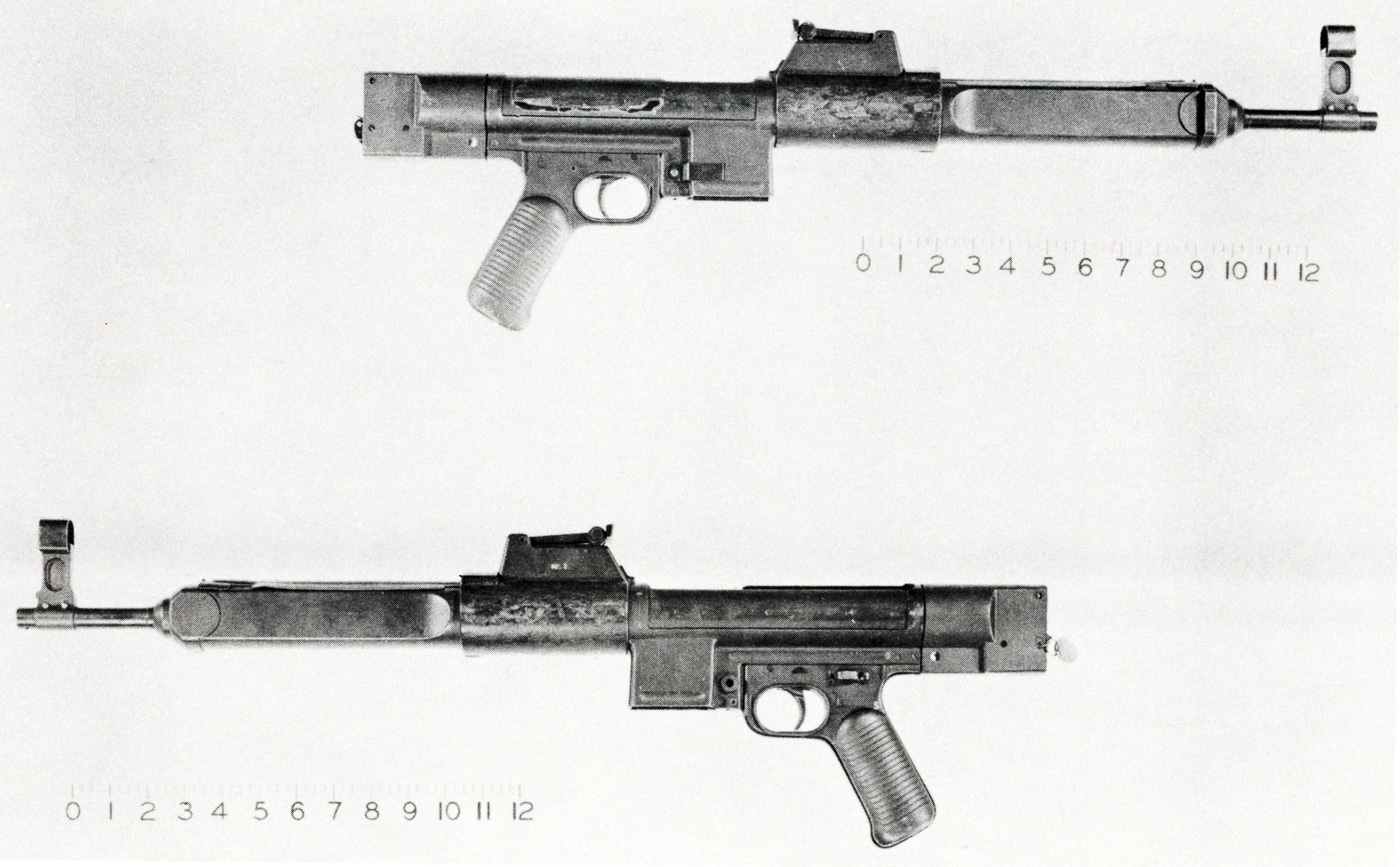
Maschinenkarabiner Gerät 06: Purely an experimental item of Mauser plant origin. Possible German service test by Wa Pruf 2 in 1943. The whole undertaking was part of an uncontracted special rifle development program at Mauser. Doubtful that more than a dozen specimens were made.
Special features: A combination compensator and muzzle brake, similar to the Soviet PPSh-41 SMG design, is assembled into the barrel jacket unit.
Remarks: Reported development of this specific type took place and was completed by 1944. Development was rapidly completed and gave way to the O6H. Appears to have a quickly detachable barrel. Fore and rear sights follow the design style set by Schmeisser at Haenel in the MP43 series. No grip pieces are used. The grip frame is directly embossed. The entire weapon makes extensive use of stamped and formed parts.
Gerät 06H (STURMGEWEHR 45 (M))
CLASSIFICATION: Special Rifle.
NOMENCLATURE (Native): Gerat 06H (S45 (m)). Grt 06H (Halbverriegelt).
NOMENCLATURE: (Common): Mauser Sturmgewehr 45 Special Rifle Experimental Type 06H.
Mauser Assault Rifle 45 (M) (CtG 45M).
ORIGIN: An evolved design simplification of the earlier combination gas and roller system special rifle designs (06 No. 2 and 06). The weapon, designed by Altenberger, Jungermann and Illenberger of the Mauser Abt. 37 in the late summer 1944, had been pre-analyzed by Maier over an 8-month period.
MANUFACTURE: Mauserwerke A.G. Oberndorf Na, Germany.
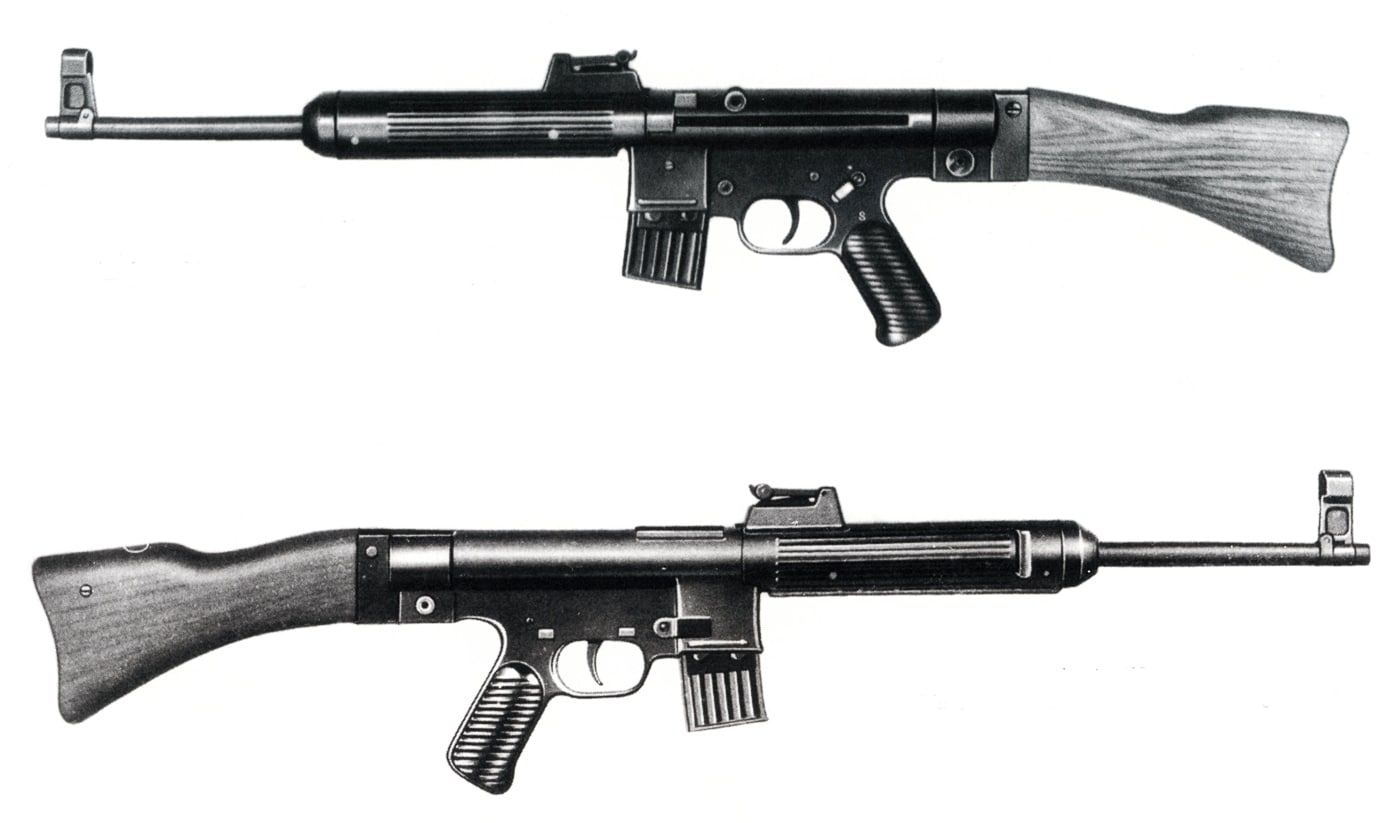
Use & Distribution: Reported to have been intended to replace the MP44 (StG 44) MP43 series. This weapon was never put into production. Approximately 30 sets of components were produced using special wood die setups. Only one is known to have been assembled. The weapon is described as having been rejected by Wa Pruf 2, by a second source.
- CALIBER: 7.9mm & 7mm
- WEIGHT: 8.18 pounds
- BARREL LENGTH: 15.75″
- OVERALL LENGTH: 35.15″
- CARTRIDGE: 7.9 Pistolen Patrone 44 and with an interchangeable barrel, the 7mm DWM MKb cartridge of 1942
- MAGAZINE TYPES: The standard 30-round MP 43 series box type was used; an experimental 10-round type which was reduced from the 30-round is also used
- CAPACITY: Maximum 30 rounds
- TYPE OF FIRE: Semi-and full-automatic by selection
- RATE OF FIRE: Reported as 350 to 450 rounds per minute
- DIRECTION OF TWIST: Right
- EFFECTIVE RANGE: 600 yards
Operating Systems and Design Types: Retarded blowback, utilizing the double roller locking arrangement of the earlier types, but eliminating the short stroke gas piston assist. The bolt is suitable, modified from the earlier design. A two-piece bolt carrier is used instead of assembling the bolt handle directly to the bolt body. The operating system is similar to the earlier design. The firing system is identical to the early design, being an MP43 or Walther design. Combined selector and safety.
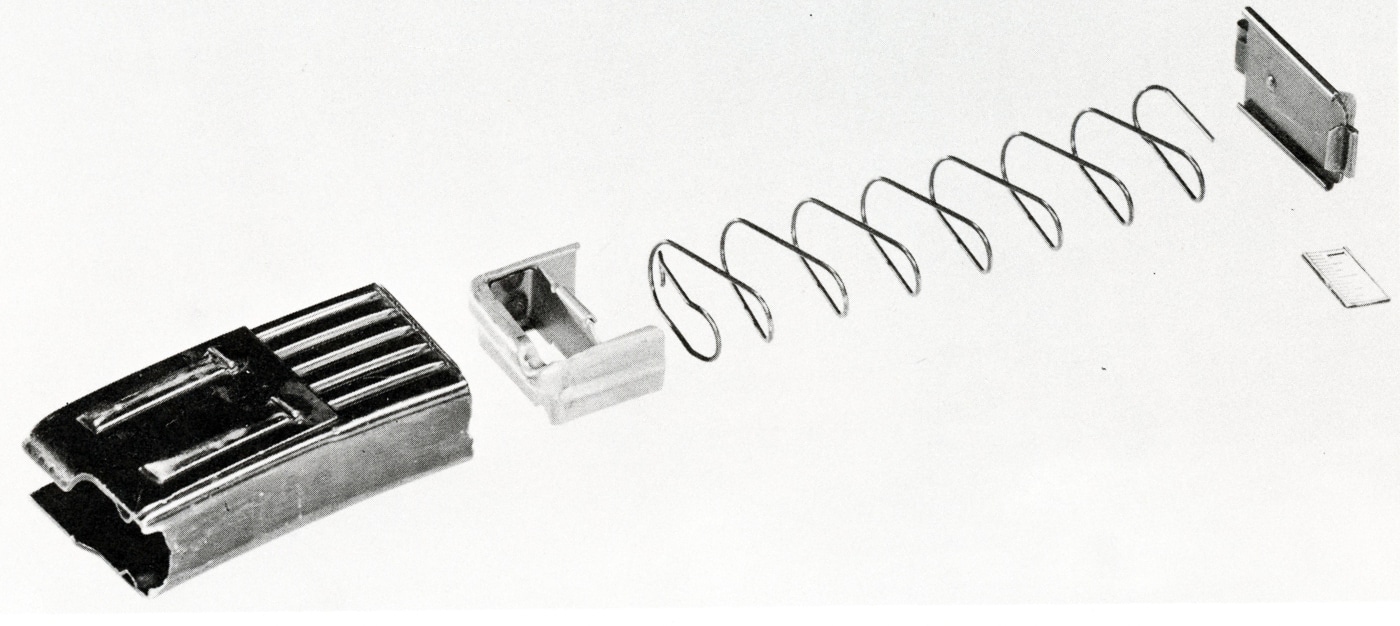
Special Features: As an experiment, Herr Kunert of Abt. 37 attempted to use barrels in the 7.9mm caliber with fluted chambers (18 flutes). The operating, feeding, and firing system was the same as standard. The intention was to improve extraction. The experiment was considered unsatisfactory and was abandoned. A small quantity of barrels chambered for the 7-mm DWM experimental MKb cartridge were prepared.
The barrels were directly interchangeable with the 7.9mm barrels. Barrels were assembled with press fit to a locking shoulder and was easily removable. Reported as equipped with a telescopic sight (mounting bracket assembled to receiver). Extensive use is made of stamped and formed parts, extra plain stock and fittings.
Conclusion
While the StG 45(M) never made it to the battlefield, its influence would be felt for decades beyond its early demise. With its innovative approach to not only design but also materials, much of the German StG 45(M) represented the future of small arms design.
Editor’s Note: Please be sure to check out The Armory Life Forum, where you can comment about our daily articles, as well as just talk guns and gear. Click the “Go To Forum Thread” link below to jump in!
Join the Discussion
Read the full article here










